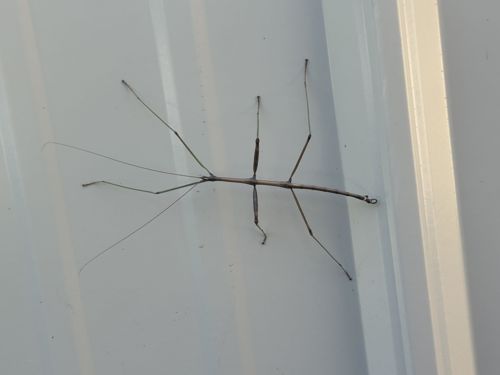Stick insect, Walking stick
Scientific Name: Phasmatodea (order)
Order & Family: Phasmatodea (order), various families (e.g., Phasmatidae, Diapheromeridae)
Size: 1.5 cm to over 60 cm (among the longest insects in the world), depending on the species.

Natural Habitat
Forests, woodlands, and areas with dense vegetation where they can camouflage among branches and leaves. Often found on host plants.
Diet & Feeding
Herbivorous. They feed on the leaves of various plants, with specific dietary preferences varying by species. Common food sources include oak, rose, privet, and bramble leaves.
Behavior Patterns
Master of camouflage; they mimic twigs, branches, or leaves to avoid predators. Mostly nocturnal, feeding at night and remaining motionless during the day. Some species can sway their bodies to imitate a twig blowing in the wind. Many species are parthenogenetic, meaning females can reproduce without males. They are generally slow-moving.
Risks & Benefits
Generally harmless to humans. They do not bite or sting. In large numbers, some species can cause defoliation of host plants, which can be an agricultural concern, though this is rare for most species. Ecologically, they are part of the food chain, serving as a food source for birds and other predators. Their camouflage and unique adaptations are of scientific interest.
Identified on: 9/18/2025